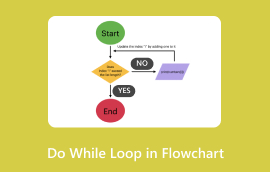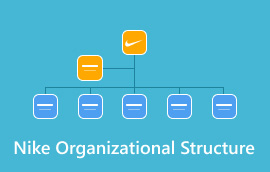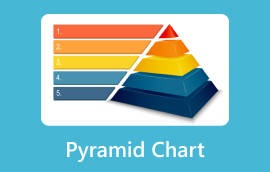Història dels ordinadors: com crear una línia de temps amb MindOnMap
La història dels ordinadors és súper interessant, plena d'invents interessants i progrés tecnològic. Des de les calculadores mecàniques de la vella escola fins als ordinadors grans i potents que tenim ara, els ordinadors han canviat la nostra manera de fer les coses, treballar i parlar entre ells. Fer una línia de temps pot ser útil per conèixer millor com han canviat els ordinadors al llarg del temps. En ordenar els esdeveniments importants i els avenços tecnològics, podeu entrar en el fons de la història de l'ordinador. En aquesta guia, veurem com fer una línia de temps de l'historial de l'ordinador amb MindOnMap, una eina pràctica que us permet veure informació i com les coses es connecten amb calma. Comenceu a aprendre a crear una línia de temps fantàstica amb MindOnMap!

- Part 1. Com crear una línia de temps de l'historial informàtic
- Part 2. Explicació de la història de l'ordinador
- Part 3. Preguntes freqüents sobre com crear un historial d'ordinadors
Part 1. Com crear una línia de temps de l'historial informàtic
Fer una línia de temps de l'historial informàtic és una manera fantàstica de comprovar com han canviat els ordinadors, des de les primeres calculadores mecàniques fins a l'engranatge digital d'alta tecnologia. En veure els grans moments i el progrés, podeu obtenir una imatge més clara de les grans fites que van fer que la informàtica sigui el que és avui. Però abans de començar, esteu buscant programari que pugui ressaltar fàcilment les coses importants de la història? Aquí teniu la millor eina per crear una línia de temps. MindOnMap és una aplicació fàcil d'utilitzar que us permet fer línies de temps detallades i atractives. Té moltes funcions que fan que l'ordenació d'esdeveniments històrics sigui una brisa, cosa que us permet ajustar i compartir la vostra línia de temps amb qualsevol persona.
Principals característiques
• Et permet ordenar els esdeveniments i les actualitzacions en ordre des de quan van passar.
• Utilitzeu formes, línies i imatges per mostrar diferents èpoques, tecnologia o persones importants.
• Escriu la història completa, quan va passar i qualsevol altre detall important per a cada esdeveniment o actualització.
• Canvia l'aspecte de la teva línia de temps.
• Si feu equip, tots podeu treballar a la línia de temps simultàniament.
• Podeu compartir la vostra línia de temps com a imatge, PDF o altres formats per enviar-lo o imprimir-lo.
Aquí teniu una guia pas a pas sobre com utilitzar MindOnMap per crear una línia de temps fantàstica de l'historial de l'ordinador:
Aneu a MindOnMap i feu clic al botó de descàrrega. A continuació, inicieu sessió i feu clic al botó Nou per iniciar un nou projecte de cronologia. Té diverses plantilles diferents per triar, així que feu clic a la pestanya Fishbone per seleccionar Fishbone.
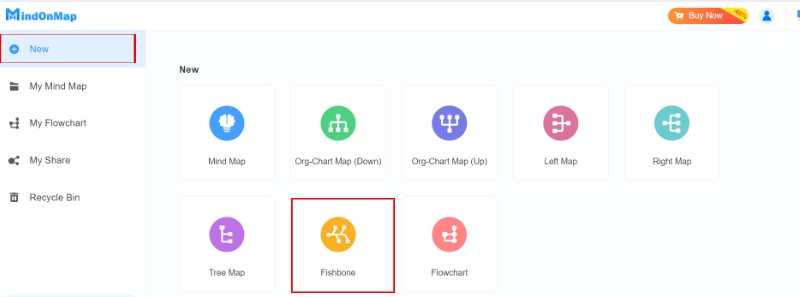
Comenceu afegint alguns moments importants a l'historial de l'ordinador. Feu clic al botó Afegeix tema per afegir un títol, esdeveniments i dates. Podeu seleccionar Temes, subtemes i temes gratuïts en funció de la vostra línia de temps.
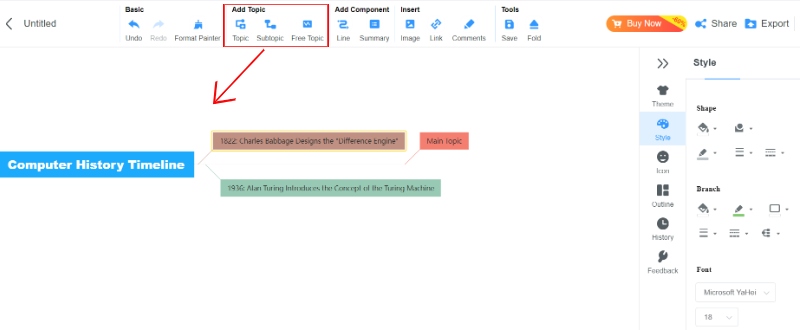
Podeu experimentar amb les eines per afegir colors, imatges i icones per millorar la vostra línia de temps. També podeu organitzar els esdeveniments per mostrar com ha evolucionat la tecnologia informàtica.

Mireu la vostra cronologia per assegurar-vos que teniu tots els esdeveniments clau i que la informació és correcta. Premeu el botó Desa si esteu d'acord amb la línia de temps. A continuació, podeu començar a compartir la vostra línia de temps de l'historial de l'ordinador.
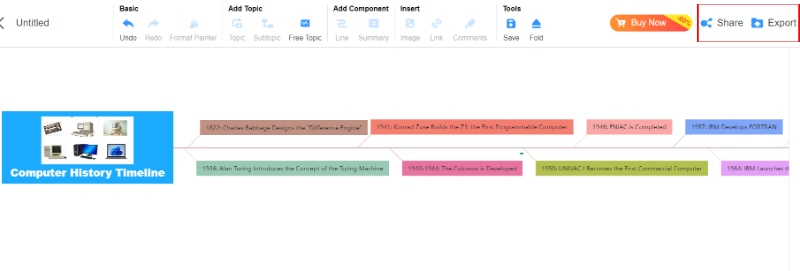
Amb aquest gran creador de línies de temps, no només podeu crear una línia de temps de l'historial de l'ordinador, sinó també fer horari de treball, diagrama de cinta, etc.
Part 2. Explicació de la història de l'ordinador
La història de la informàtica és molt interessant i es remunta a més de 200 anys, mostrant com la tecnologia ha canviat de les màquines de la vella escola a les digitals d'alta tecnologia de les quals depenem ara. Aquesta línia temporal assenyala moments importants de la història de la informàtica, des de les primeres idees fins a la creació dels ordinadors actuals. Cada moment va ser molt important que va ajudar la tecnologia a avançar ràpidament, canviant la nostra manera de viure, treballar i parlar en línia. Ara, fem una ullada a la cronologia de la història de l'ordinador.
1. 1822: Charles Babbage dissenya el motor de la diferència
Un matemàtic anglès, Charles Babbage, va inventar el motor de diferències. Era una màquina que podia calcular automàticament funcions polinomials. Tot i que no el va acabar durant la seva vida, es considera una de les primeres idees per a un ordinador.
2. 1936: Alan Turing presenta la idea de la màquina de Turing
Un matemàtic britànic, Alan Turing, va escriure un article clau anomenat On Computable Numbers, que va introduir la idea de la màquina de Turing. Aquesta idea és important per entendre com funcionen els ordinadors i ha donat forma al disseny dels ordinadors actuals.
3. 1941: Konrad Zuse construeix el Z3, el primer ordinador programable
Un enginyer alemany, Konrad Zuse, va acabar el Z3, el primer programa informàtic. És un dispositiu electromecànic que pot fer matemàtiques de coma flotant, marcant l'inici de l'era de la informàtica digital.
4. 1943-1944: Es desenvolupa el Colossus
El Colossus, construït pels decodificadors britànics durant la Segona Guerra Mundial, va ser el primer ordinador digital programable. Va ser dissenyat per trencar el xifrat alemany de Lorenz, però la seva existència va romandre en secret durant molt de temps.
5. 1946: S'acaba l'ENIAC
John Presper Eckert i John Mauchly van acabar de construir l'Electronic Numerical Integrator and Computer (ENIAC), el primer ordinador fet per abordar diferents tipus de problemes, iniciant l'era de la informàtica.
6. 1950: UNIVAC I es converteix en el primer ordinador comercial
L'UNIVAC I va ser el primer ordinador fet per a treballs empresarials i d'oficina. Va ajudar l'Oficina del Cens dels Estats Units i va predir amb precisió les eleccions presidencials dels EUA de 1952.
7. 1957: IBM desenvolupa FORTRAN
IBM va desenvolupar FORTRAN, el primer llenguatge de programació avançat. Era per a la ciència i l'enginyeria. FORTRAN va obrir el camí per a altres idiomes.
8. 1964: IBM llança l'ordinador System/360 Mainframe
IBM va llançar el System/360, un grup d'ordinadors mainframe. Va fer que el maquinari i el programari siguin coherents, canviant la indústria. Va tenir molt d'èxit i va tenir un gran impacte en els futurs sistemes informàtics.
9. 1971: Intel llança l'Intel 4004, el primer microprocessador
Intel va llançar l'Intel 4004, el primer microprocessador, una CPU d'un sol xip. Aquest invent va iniciar la revolució dels microprocessadors, obrint el camí als ordinadors personals.
10. 1975: S'estrena l'Altair 8800
L'Altair 8800, fabricat per MITS, es veu com el primer ordinador personal. Es va vendre com un kit i ràpidament es va fer popular entre els aficionats, començant la revolució de la informàtica personal.
11. 1981: IBM presenta l'IBM PC
IBM va presentar l'IBM PC, que aviat es va convertir en la norma per a l'ús empresarial i domèstic. El seu disseny, que utilitzava peces fàcilment disponibles, va facilitar la compra per a molts i va ajudar a expandir el mercat de PC.
12. 1984: Apple llança el Macintosh
Apple va llançar el Macintosh, el primer ordinador personal amb una GUI i un ratolí. Va facilitar la informàtica per a tothom i va obrir el camí per als futurs sistemes GUI. És on comença la història d'Apple Computer.
13. 1990: Tim Berners-Lee crea la World Wide Web
Tim Berners-Lee, un científic informàtic britànic, va crear la World Wide Web, facilitant la compartició i l'accés a la informació en línia. Aquest invent va canviar la manera com les persones es comuniquen, treballen i troben informació a tot el món.
14. 1998: es funda Google
Larry Page i Sergey Brin van llançar Google mentre estaven cursant el seu doctorat a la Universitat de Stanford. El cercador de Google es va convertir en la principal manera de trobar informació en línia, canviant la manera com la gent utilitza i troba el contingut digital.
15. 2007: Apple presenta l'iPhone
Apple va presentar l'iPhone, un dispositiu innovador que va fusionar un telèfon, un iPod i un comunicador d'Internet en un sol. Va canviar el mercat de la telefonia mòbil i va establir l'escenari per a la tecnologia dels telèfons intel·ligents actual.
16. 2011: Watson d'IBM guanya perill
Watson d'IBM, un ordinador intel·ligent, va vèncer als millors jugadors humans a Jeopardy. Va mostrar el potencial d'una intel·ligència artificial forta i una comprensió lingüística. Va destacar les possibilitats de l'IA en diversos camps.
17. 2020: el processador quàntic Sycamore de Google aconsegueix la supremacia quàntica
Google ha anunciat que el seu processador quàntic Sycamore ha assolit una fita important en completar un càlcul que cap ordinador clàssic podria fer. Aquest assoliment suposa un gran pas endavant en el desenvolupament de la futura tecnologia informàtica.
Aquestes fites mostren com els ordinadors van passar de ser simples calculadores mecàniques als dispositius d'alta tecnologia que tenim ara. Cada pas va ajudar a que la tecnologia creixi ràpidament, canviant com funciona el nostre món actual.
Part 3. Preguntes freqüents sobre com crear un historial d'ordinadors
Quines són les cinc èpoques de la història de la informàtica?
La història dels ordinadors comprèn cinc períodes principals: Era premecànica: aquest període va ser abans que s'inventessin dispositius mecànics com el Pascaline i el Stepped Reckoner. La gent utilitzava eines com l'àbac per als càlculs. Era Mecànica: En aquest període es van crear màquines de càlcul mecàniques que utilitzaven engranatges i rodes, com ENIAC i UNIVAC.
Era electrònica: van començar a aparèixer els ordinadors electrònics, utilitzant transistors i tubs de buit. ENIAC i UNIVAC van ser els primers exemples. Era dels ordinadors personals: la introducció dels ordinadors (PC), com Apple II i IBM PC, va canviar. Va fer que els ordinadors fossin habituals a les llars i les empreses. Era de la informàtica moderna: aquest és el moment actual, marcat pel creixement dels telèfons intel·ligents, tauletes i Internet. També inclou el desenvolupament de la computació en núvol, la intel·ligència artificial i l'aprenentatge automàtic.
Quan van sortir els ordinadors al públic?
Els ordinadors personals van ser àmpliament disponibles per al públic a finals dels anys setanta i principis dels vuitanta. Els primers models d'èxit, com Apple II i IBM PC, eren assequibles i accessibles per a més gent.
Quin any es va inventar Internet?
La World Wide Web, iniciada l'any 1989 per Tim Berners-Lee, és un mètode per accedir a la informació des d'Internet. Però, Internet, una xarxa global d'ordinadors, s'ha anat expandint des dels anys seixanta.
Conclusió
Per fer a història informàtica Timeline amb MindOnMap, podeu enumerar esdeveniments informàtics importants, afegir imatges i detalls i compartir-los per treballar en equip o presentar-los. MindOnMap fa que sigui fàcil veure i entendre aquests canvis.








